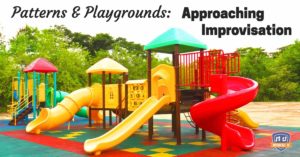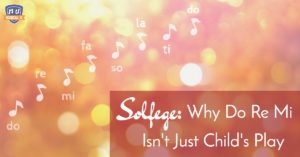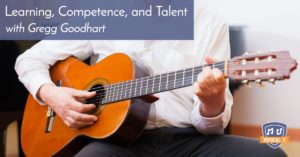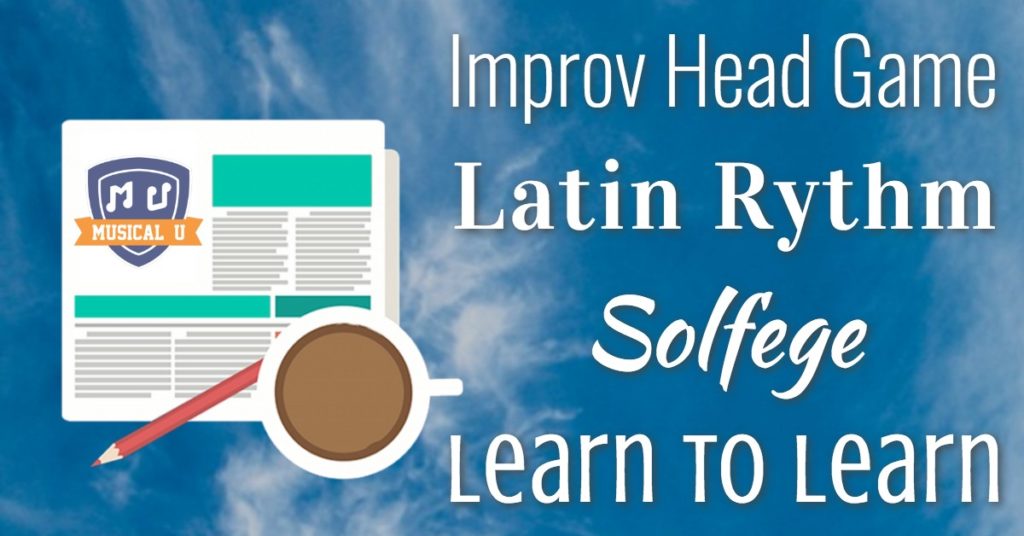Why are we so obsessed with music? Why is it that we can’t stop that soundtrack playing in our heads? Why is it that we are struck with unexpected depression if we go a few days without touching our instrument or singing? Why is losing our headphones worse than losing the car keys?
Given that freestyle snowboarding isn’t an option for most of us, is there anything else that brings mind and body together in the creation of beauty like music?
This week at Musical U, we explored what we can do with our minds to boost our music beyond where we thought we could ever go. Gregg Goodhart (The Learning Coach) takes scientific research on learning and applies it to your practicing, moving you beyond where you thought you could go. We learn how the mental exercise of solfege (aka solfa) magically ups your hearing abilities to identify exactly what notes you’re hearing and play them on your instrument.
Learning to identify the traditional sounds of Latin music expands our minds into a new world of genres. And no matter where you are in your instrumental skills, improvisation really begins in your head.
Patterns and Playgrounds
 So many musicians are baffled by improvisation. Why is it that some phenomenally skilled musicians don’t improvise, and some beginners are jamming fresh out of the gate? It turns out that while instrumental skills give you more to play with, improvisation is really a mindset.
So many musicians are baffled by improvisation. Why is it that some phenomenally skilled musicians don’t improvise, and some beginners are jamming fresh out of the gate? It turns out that while instrumental skills give you more to play with, improvisation is really a mindset.
The problem? That mindset is rarely taught in traditional music education. It’s either absorbed as part of a culture, discovered independently, or painstakingly cultivated over a long period of time.
The good news is that we’ve clearly defined the improvisation mindset and the steps you can take to make it your own.
Lately, at Musical U we’ve been breaking down the mental attitudes and understandings that enable us to approach improvisation. Musical U founder Christopher Sutton talks about what we’ve learned from our new Approaching Improvisation module, the new improvisation packs from our Resident Pros, and the lively discussions with our members. Enjoy this fascinating, in-depth look at Patterns and Playgrounds: 4 Ways to Approach Improvisation.
Improvisation is difficult and scary for both new and experienced musicians. But, there are ways that you can overcome any fears and become comfortable with the art of spontaneously creating great music. Stan at muz4now has three great tips for improving your improvisation skills as an essential part of your musicality.
As discussed by the Musical U Resident Pros, patterns play a big part in improvisation for many musicians. Better Sax has this video that introduces pentatonic patterns and the best way to begin learning them:
For many classically trained musicians, improvisation can be a scary and unnatural experience that takes them far out of their comfort zones. Simply Music shares the story of how one musician was able to move past these hurdles to learn to love and appreciate the art of improvisation
Latin Rhythm
 How do you grasp a hemisphere of musical genres? Latin music was formed in a dynamic cultural crucible, melding of African, European, and Native American influences. Exciting dance rhythms – and a wonderful variety of percussion instruments – is one of the most salient characteristics of Latin music. Open Your Ears to Traditional Latin Music and get ready to move!
How do you grasp a hemisphere of musical genres? Latin music was formed in a dynamic cultural crucible, melding of African, European, and Native American influences. Exciting dance rhythms – and a wonderful variety of percussion instruments – is one of the most salient characteristics of Latin music. Open Your Ears to Traditional Latin Music and get ready to move!
Latin music of the Caribbean revolves around the clave rhythm. Latino Music Cafe explores the legacy of Ismael Rivera and his ability to sing around the clave.
Another hallmark of latin music is the piano breakdown, where the rest of the band drops out and allows the pianist to carry it for a couple of measures. To learn how to play this groove, check out Piano With Willie.
The guitar is found in much Latin music and has its own defining characteristics within this genre. A well rounded guitar player can learn a great deal from Latin styles, which are sure to help with nearly every other style of music. Jazz Guitar Online lays out the essential 10 Latin Jazz guitar rhythms.
Latin rhythms are crucial for any percussionist. Check out this video from Dance Papi on how to play conga drums in the Patato style:
Do Re Mi
 Ever wish you could hear music and know exactly what you just heard and play it on your instrument? While we often associate the syllables do – re – mi with children’s music, the magical skill known as solfege (aka solfa and solfeggio) allows you to know and reproduce exactly the notes you hear.
Ever wish you could hear music and know exactly what you just heard and play it on your instrument? While we often associate the syllables do – re – mi with children’s music, the magical skill known as solfege (aka solfa and solfeggio) allows you to know and reproduce exactly the notes you hear.
Find out the what, when, where, and how of your magical musical powers in Solfege: Why Do Re Mi Isn’t Just Child’s Play.
While most adults will learn solfege through ear training and reading sheet music, there are many methods that can be used to teach young children. This video from Preschool Prodigies teaches hand signals to teach the basics of solfege without reading music.
When learning solfege, it is important that you find a way to practice to build your ability to hear the pitches and relationships between them. A piano is often the best way to do this. Enhance your learning with How to Sing Smarter’s easy-to-use piano chart.
If you are new to solfege, or teaching someone else, some sheet music can really help. Michael Kravchuk has free solfege sheets that will greatly enhance the ability to learn solfege and increase understanding of the concepts.
Solfege is typically part of a broader effort to become better with ear training and recognizing the relationship between pitches. Vocalist has a number of exercises that will enhance your ability to quickly learn solfege and better train your ears!
Learning to Learn
 Why is it that there are some musical passages that seem beyond our abilities? No matter how much we practice them, or for how long, we can’t get them to “stick”?
Why is it that there are some musical passages that seem beyond our abilities? No matter how much we practice them, or for how long, we can’t get them to “stick”?
Gregg Goodhart has gone beyond the traditional musical wisdom on practicing and preparation by taking the latest scientific research on learning and applying it in teaching settings with hundreds of students for thousands of hours. As a result, he has learned to help us break through our barriers and achieve musical mastery beyond what we thought was possible.
Read more about his fascinating work in Learning, Competence, and Talent, with Gregg Goodhart.
Talent in the music industry has been a long-discussed subject. Gregg believes that talent is learnable, and that true world-class performer are developed through hard work and dedication. “Talent is Overrated, by Geoff Colvin shows how to differentiate yourself from the rest of the field.
Gregg has spent his career reconsidering the “old” methods of music education in pursuit of a better path forward. Music Teachers Helper provides fascinating suggestions for how the student experience can be changed for more effective music instruction.
Gregg has made a career of consistently innovating and staying connected with other music educators. With social media, there are so many great ways for music teachers to connect with one another and share information with one another. But, where to begin? Mrs. Miracle’s Classroom has a great resource for teachers to help them navigate the social media world.
For years there has been a continuous debate over the so-called “Mozart Effect”. Does listening to classical music increase IQ in children? However, instead of listening to classical music solely for the benefits that it can provide, might it be better to just teach the beauty of the arts? Maestro Classics explores the idea and shares links to great music.
Change Your Mind – Change Your Music
Sometimes we work so hard on our music, that we forget the simple, moving beautiful experience of the art. Improvisation, ear training with solfege, wrapping your ears around new Latin rhythms… even learning itself sometimes feels so hard.
It doesn’t always have to be that way! While dedication and commitment are crucial ingredients to achieving the results we desire, read through this week’s Musical U posts to learn how a simple shift in how we are using our minds can make a world of difference.







